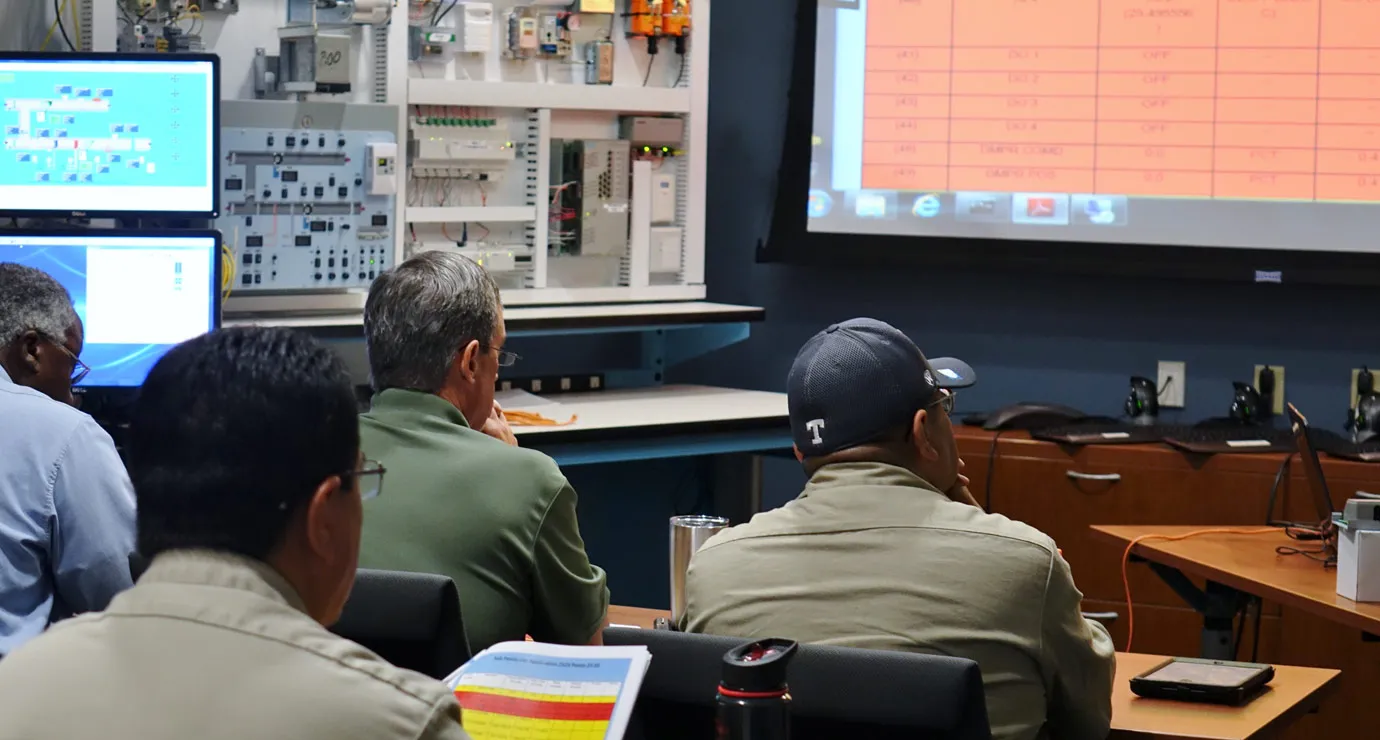
Read our article on Test-Driving Building Automation Simulators to see how the Buildings Operations manager developed two high-tech devices and a curriculum to provide in-house training for his staff while saving the university money and time.
This article is also part of our: Values at Work Series
Building Operations, a branch of the Facilities Operations and Maintenance Division, consists of three main areas of support to University operations:
- Facilities Monitoring
- Building Automation Systems (BAS) Analysis and Programming
- Building Optimization Team (BOT)
Need Service?
Facilities Service Center
Main: 512-471-2020
UT Works
General Inquiries: facilities@austin.utexas.edu
Events & Moving:
fs-events@austin.utexas.edu
Facilities Monitoring
Monitoring Building Automation Systems
This team provides around-the-clock monitoring of Building Automation Systems (BAS) and BAS alarms on campus from a centralized Operations Center. The Operations Group controls and monitors the mechanical systems for temperature control and energy management. Managing the environmental conditions in buildings is critical in spaces such as museums, computer rooms, libraries, and laboratories. Managing the operation of buildings helps the University by:
- Conserving resources
- Lessening environmental impact
- Reducing utility costs
Facilities monitoring allows us to respond quickly to building systems not operating properly, and to limit building downtime and disruptions to occupants.
Critical Alarm Response Systems (CARS)
CARS was developed to safeguard the research that supports our University's mission. This high-priority alert system monitors and controls equipment critical to researchers. When a CARS alarm is activated, our staff receives, evaluates, and coordinates a timely response and resolution to the operational issue. Alerting equipment owners during this process ensures proper handling of valuable research to prevent potential loss.
After-Hours Maintenance Call Response and Dispatch
Building Operations also serves as the after-hours call center for all campus maintenance issues. A campus as large and complex as The University of Texas at Austin can face facilities-related issues that must be addressed immediately. The operator on duty at the center dispatches trade-specialized first responders who are on call to address the situation, helping avoid extensive property damage and prevent building downtime. The after-hours call center team is available at 512-471-2020.
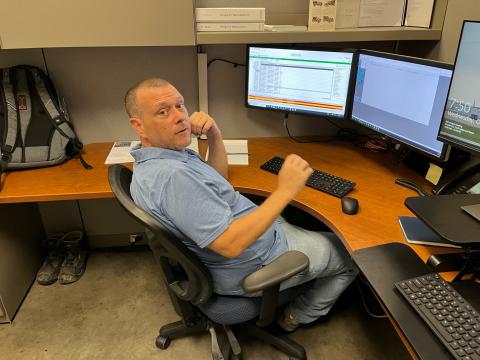
Building Automation Systems Analysis and Programming
The BAS Analysis and Programming team:
- Performs high-level troubleshooting and diagnostics on BAS to ensure proper operation of facilities' systems
- Creates or edits new automation programs to improve building operation performance reduce energy consumption
- Provides network support for BAS to ensure reliable connectivity to building systems
Building Optimization Team (BOT)
Read the Values at Work Series story about BOT, below.
View the BOT On the Job photo album:
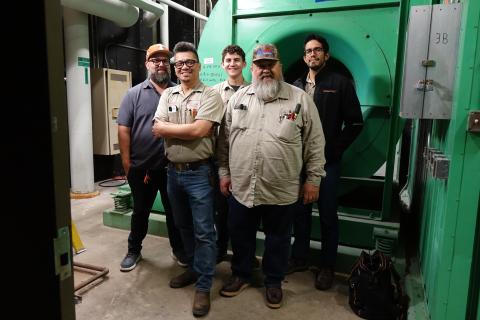
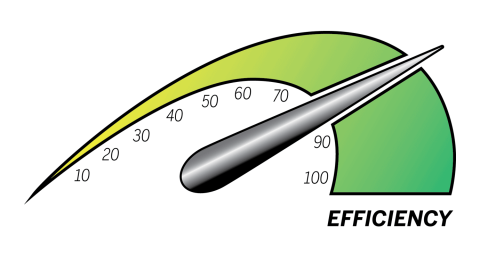
Read our article, UT’s Tech Team Moves the Needle Toward Building Optimization, to see how a specialized ops team brings their A-game and expertise to make our campus buildings operate more efficiently and effectively.
This article is part of our: Values at Work Series
-

(Left) BOT members using flow hood to measure the volume of air coming out of the vents at Sanchez. Ladder safety is used by the team.
(Right) BOT members at Sanchez taking the air temperature at the diffuser (vent) and recording the data on a laptop.
The BOT implements a technical process that improves how existing building equipment and systems function together (also known as “retro-commissioning”), which includes:
- Performing an in-depth assessment of building systems to identify deficiencies that negatively impact building efficiency
- Working with Zone Maintenance to make identified repairs and refer repairs to the Replacement & Renewal Program
- Working with energy engineering and BAS analysts to make programming and parameter changes to increase building efficiency
The BOT, largely composed of senior-level technicians, works in conjunction with the Facilities Operations and Maintenance division's Engineering and Technical Support experts and Utilities and Energy Management's energy stewards to restore buildings' heating, ventilation, and air conditioning (HVAC) systems to operate in accordance with their original design.
The BOT selects buildings in phases to undergo an energy audit and performance review. The team also makes low- or no-cost changes to the systems to improve energy efficiency and building performance.
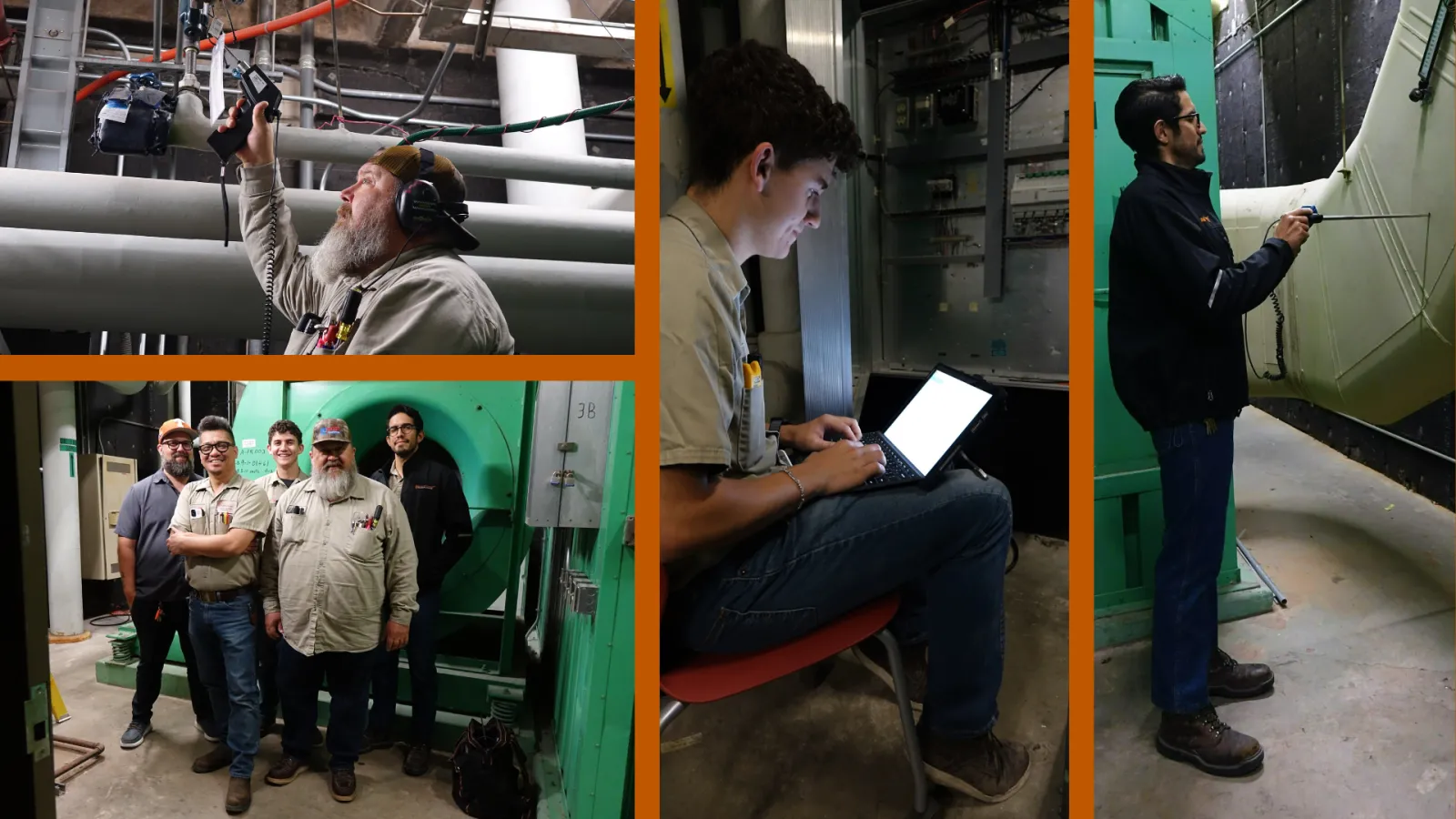
(Lower left) From front left, Tony Le and Roger Hale. From back left, Supervisor John Duttinger, Tanner Dale and Jesus Huizar. Technical Trades Crew Leader Randy Ford was not available for the photo.
(Center) BOT member uses tablet to access the building automation system remotely for the air handler at Sanchez.
(Right) BOT member taking a temperature read from inside the air duct at Sanchez using a temperature and humidity probe.
Latest Technology
Building optimization technicians use the latest technology to measure such media as air flow velocity, chilled water, steam, and hot water flow rates at various points in the building HVAC system. They use this information to determine whether HVAC systems are operating efficiently.
Impacts on Building Occupants
The BOT performs most work during regular business hours to avoid disrupting building occupants and activities. The team coordinates work with individual building managers.
For more information on the building optimization program contact BOT Supervisor John Duttinger by email john.duttinger@austin.utexas.edu or call 512-471-3505.
